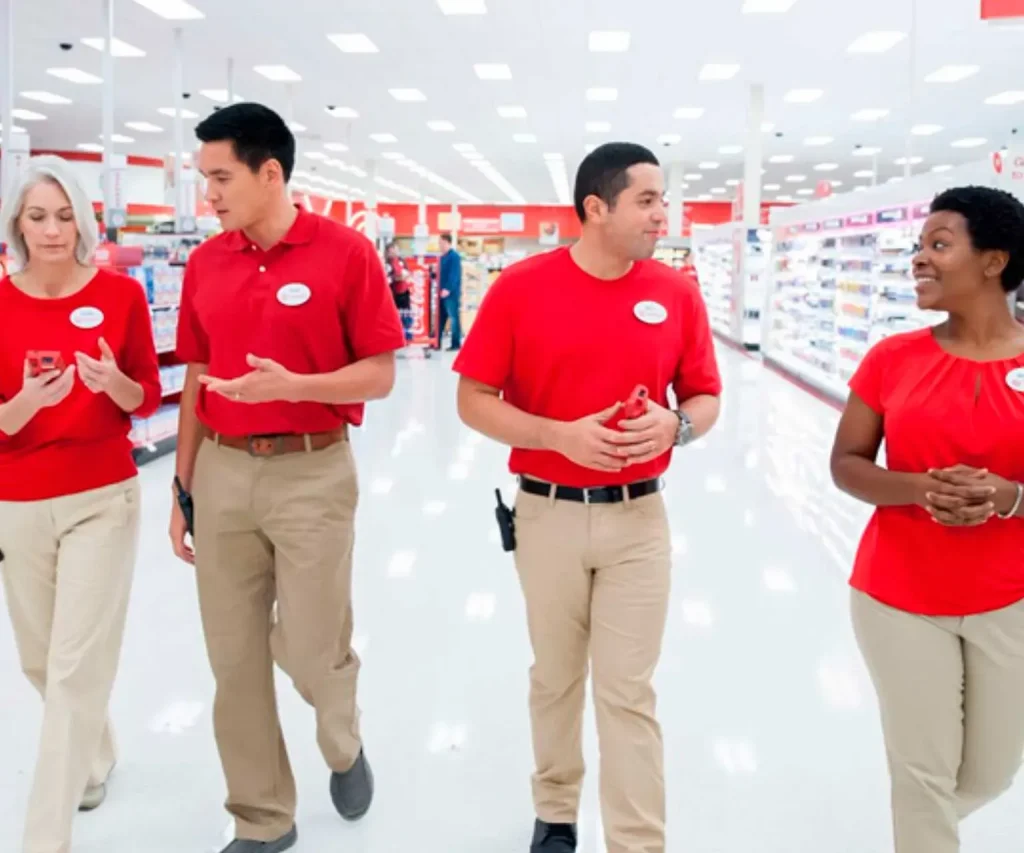Target retail challenges have taken center stage as the iconic retailer grapples with significant obstacles in today’s competitive market. Following a controversial rollback of its diversity, equity, and inclusion (DEI) initiatives, Target has faced a nationwide boycott that has severely impacted foot traffic and brand loyalty. This, compounded with fierce retail competition from the likes of Amazon and a marked decline in consumer spending due to inflation, has left Target struggling to maintain its market share. Additionally, issues related to inventory management, stemming from overstock and staffing shortages, have further strained Target’s profitability. With its current predicament, it’s crucial for Target to realign its strategies and recover consumer confidence to navigate these turbulent times successfully.
In recent months, the obstacles confronting Target have become increasingly apparent, showcasing their impact on the retailer’s operations and market position. The backlash surrounding their diversity initiatives has led to widespread consumer dissatisfaction, prompting conversations about corporate responsibility and community engagement. As mass retailers like Amazon adapt to shifting consumer behaviors, Target finds itself in a challenging landscape marked by heightened retail rivalry and economic pressures. Furthermore, issues such as effective stock management and meeting consumer expectations during a spending decline present significant challenges for the company. This need for strategic realignment underscores the importance of innovative approaches that could reinvigorate Target’s appeal and performance in the retail sector.
The Impacts of the Target Boycott on Retail Growth
The recent boycotts against Target have reverberated throughout the retail landscape, significantly impacting the company’s foot traffic and overall sales. With operational metrics reflecting a troubling trend—11 consecutive weeks of declining shopper visits—Target is now confronted with a stark reality. As consumers increasingly reconsider where they allocate their spending amid controversies regarding the rollback of its DEI initiatives, the effects extend beyond mere public opinion; they translate into tangible losses in revenue. This consumer backlash may result in a long-term shift in brand loyalty, causing customers to explore alternatives offered by competitors like Walmart and Costco who have maintained more stable consumer relations.
Furthermore, the implications of the boycott are compounded by a backdrop of heightened retail competition, particularly from agile market players like Amazon. As these rivals capitalize on not just pricing strategies but also consumer sentiment, the pressure on Target intensifies. The need for a robust response is critical, not only to counteract the immediate financial hits but also to restore the brand image and consumer trust that have been shaken by these events. It’s crucial for Target to re-evaluate its position in the retail hierarchy and adapt its strategies accordingly to regain its market footing.
Navigating Retail Competition in a Tough Market
In the world of retail, competition is evolving at a rapid pace, with companies constantly innovating to capture consumer interest and market share. Target’s traditional strengths are being tested as nimble competitors like Amazon and Costco adapt more quickly to changing shopping behaviors and consumer preferences. The decline in consumer spending, exacerbated by inflation and fluctuating tariffs, has only intensified the urgency for retailers to refine their strategic outlook. Companies that can adjust inventory management systems in response to these fluctuations stand to gain significant advantages; those that cannot may falter.
Target’s challenge lies not only in managing its operational efficiency but also in fostering brand differentiation that resonates with today’s consumers. As shoppers pivot towards brands that showcase commitment to social values, aligning promotional efforts with consumer expectations of corporate responsibility becomes essential. Through strengthening its presence in DEI initiatives, Target can rebuild its reputation and regain consumer favor, thereby positioning itself favorably against the backdrop of stiff retail competition.
Addressing DEI Initiatives and Their Role in Corporate Strategy
Diversity, equity, and inclusion (DEI) initiatives have become a focal point for many organizations, and Target’s recent rollback has exposed it to a significant backlash. The backlash reveals that consumer sentiment is closely tied to perceived corporate values and actions. Companies that fail to uphold a commitment to DEI may risk alienating portions of their customer base, leading to detrimental effects on foot traffic and sales as evidenced by Target’s current scenario. Employees and consumers alike are increasingly demanding accountability and action from brands, hence realigning DEI initiatives with a more genuine and engaging approach could serve as a solution to restore trust.
Moving forward, Target needs to reassess how its corporate strategies align with consumer expectations regarding social justice and inclusivity. This reassessment should also include integrating DEI values into everyday business operations, from hiring practices to community engagement. By presenting a clear, actionable plan to revive and enhance its DEI initiatives, Target can rebuild loyalty among its customers while addressing the concerns raised by its critics. Ultimately, successful reintegration of DEI practices can serve not only as a shield against boycotts but as a proactive means of attracting a more diverse and engaged consumer base.
Consumer Spending Decline: Strategies for Recovery
The decline in consumer spending is a pressing concern for retailers like Target. As inflation bites into discretionary budgets, customers are becoming more selective about where they choose to spend their money. Data indicates that while total consumer spend has remained steady, Target’s share in that spend is shrinking as consumers turn to competitors who may offer more value or align better with their social consciousness. To address this trend, Target must not only enhance in-store experiences but also innovate its online shopping interface to capture a larger segment of the market.
Moreover, understanding the root causes of consumer hesitance can help Target reframe its approach to customer engagement. This involves conducting market research to gather insights on changing consumer behaviors and preferences, particularly as they relate to pricing strategies and product assortments. By diversifying offerings and ensuring they reflect value and quality, Target can work towards reversing the trend of diminishing dollar shares among its shoppers while also fostering loyalty with competitive pricing and promotions.
The Role of Inventory Management in Retail Success
Effective inventory management is critical in today’s rapidly changing retail environment, particularly for Target, which has faced challenges with excess and tied-up inventory. This issue not only hampers cash flow but can also lead to markdown sales that affect profit margins. By streamlining inventory processes and implementing just-in-time stock management techniques, Target can better align its inventory with consumer demand and seasonal trends. This adaptive approach can alleviate the financial strain while enhancing overall operational efficiency.
Additionally, a robust inventory management system can facilitate better forecasting and sales analysis, thereby preventing overstock or stockouts. By leveraging technology and real-time data analytics, Target can respond faster to market shifts, improving its competitiveness against rivals. Ultimately, mastering inventory management will empower Target to keep pace with shopping trends and maintain profitability in a highly competitive retail landscape.
Building Consumer Trust through Strategic Partnerships
To navigate the complexities of retail today, Target must prioritize building strategic partnerships with brands and designers that resonate with consumers. Collaborations that emphasize sustainability, ethical sourcing, and innovative product lines can rejuvenate Target’s offerings, boosting its appeal to a wider audience. These partnerships not only diversify Target’s inventory but also attract loyal clientele who are more likely to choose retailers that align with their values.
Furthermore, these partnerships can enhance Target’s marketing strategy, presenting opportunities for co-branded advertising and promotional campaigns that create excitement around new releases. Engaging with influential voices in the industry to launch unique collections can also play a crucial role in reigniting consumer interest and replenishing foot traffic. In a market where brand choices are abundant, adapting the product portfolio through strategic collaborations can significantly increase Target’s market competitiveness.
Responding to the Evolving Landscape of Retail
The retail landscape is evolving rapidly, with consumer expectations shifting towards more personalized and engaging experiences. Target faces the challenge of adapting its operational strategies to align with these changes while effectively managing the backlash of its recent decisions. Authentically addressing consumer concerns related to DEI, as well as improving operational efficiencies, is crucial to overcoming challenges in the evolving landscape of retail where customer loyalty is hard to come by.
Target’s commitment to agility and profitability should not only encompass financial metrics but also resonate with customer-centric values that matter today. By prioritizing feedback and communication with its consumers, adapting its pricing strategies, and enhancing the in-store experience, Target can position itself as a responsive retailer ready to meet the demands of contemporary shoppers. Ultimately, thriving in today’s dynamic retail environment requires a strategic blend of innovation, adaptability, and community engagement.
Analyzing Market Share Loss and Recovery Strategies
The recent analysis of Target’s market share loss, particularly compared to competitors like Amazon, Costco, and Walmart, highlights the urgency for a renewed strategy. As the data reflects a gradual decline, with a loss of 0.18% market share, it becomes evident that necessary adjustments must be made to regain competitiveness. This situation not only calls for an enhanced product offering but also a reevaluation of marketing strategies to reestablish Target’s presence as a relevant player in the retail game.
In addition to reassessing product lines and pricing tactics, Target must also commit to improving consumer engagement through targeted promotions and community-focused events. By creating campaigns that highlight both value and quality, the retailer can draw back customers who may have diverted their spending to alternatives. Building brand affinity through targeted outreach strategies that resonate with current consumer sentiments will be key to recapturing the lost market share and propelling growth in the competitive landscape.
Leveraging Consumer Feedback for Strategic Improvement
Consumer feedback plays an instrumental role in shaping retail strategies, and Target must capitalize on this resource to drive improvements across all areas of their business. By actively encouraging and analyzing customer input, Target can address specific pain points that shoppers experience, from product availability to store experiences. Collectively, these insights can guide strategic changes that resonate with what customers want, ultimately enhancing satisfaction and loyalty.
Additionally, listening closely to consumer voices will allow Target not only to mitigate current challenges but also to stay ahead of emerging trends. Implementing systems for regular feedback collection and fostering open communication channels will empower Target to remain agile and responsive to market conditions, ensuring the brand evolves in alignment with consumer expectations. Such a proactive stance will enhance Target’s ability to create long-lasting value for its stakeholders while making it a compelling choice in a crowded retail marketplace.
Frequently Asked Questions
What are the key challenges Target retail faces today?
Target retail is grappling with several challenges, including increased retail competition from firms like Amazon, a backlash from the rollback of its DEI initiatives, and a significant decline in consumer spending due to inflation. Additionally, inventory management issues, including excess stock and staffing shortages, have compounded these problems, impacting their revenue and overall market share.
How is the Target boycott affecting the company’s sales performance?
The Target boycott, following the company’s rollback of diversity, equity, and inclusion initiatives, has resulted in decreased foot traffic and has contributed to a decline in sales. Reports indicate that Target experienced 11 consecutive weeks of reduced store visits, which hampers its ability to compete effectively with rivals like Walmart and Costco amid declining consumer spending.
What impact does retail competition have on Target’s market position?
Retail competition poses a significant threat to Target’s market position as consumers are increasingly diverting their spending to agile rivals like Amazon, Walmart, and Costco. With Target losing 0.18% of its market share between 2021 and 2024, the heightened competition is compelling Target to reassess its strategies and focus on enhancing customer engagement and inventory management.
How do DEI initiatives relate to Target’s recent challenges?
Target’s recent rollback of DEI initiatives has sparked backlash and boycotts, which are directly impacting foot traffic and consumer perception. The challenge lies in balancing these initiatives while addressing the broader retail competition and consumer spending decline. Experts suggest that missteps in DEI have compounded existing operational challenges Target faces.
What strategies is Target implementing to combat consumer spending decline?
In response to the decline in consumer spending, Target is focusing on becoming more agile and generating profitable growth. They aim to control what they can by listening closely to consumer feedback and reassessing their inventory management practices to ensure better alignment with current market demands, while defining what sets them apart in a competitive retail landscape.
Why is inventory management critical for Target amid retail competition?
Effective inventory management is vital for Target, especially given the current retail competition dynamics. With excess inventory and staffing shortages leading to stagnation in revenue, targeting better practices in inventory control will help enhance customer satisfaction, reduce unnecessary discounts, and ultimately improve profitability against competitors who are managing their supply chains more efficiently.
Can Target recover from its current market challenges?
While Target faces considerable challenges, including backlash from DEI rollbacks and declining market share due to retail competition, recovery is possible. By focusing on agility, refining inventory management practices, engaging actively with consumers, and reinforcing their brand value, Target can work towards regaining consumer trust and improving its sales performance.
| Key Challenges | Details |
|---|---|
| Backlash on DEI Initiatives | Rollbacks on diversity, equity, and inclusion initiatives have led to nationwide boycotts and declining foot traffic. |
| Increased Competition | Agile competitors like Amazon are gaining market share, while Target has struggled to retain its customers. |
| Inventory Management Issues | Excess inventory and staffing shortages have resulted in stagnant revenue and a falling share price. |
| Customer Spending Trends | Customers are spending similarly to 2021 but are increasingly shopping at Walmart and Costco instead of Target. |
| Market Share Loss | Between 2021 and 2024, Target lost 0.18% market share while competitors gained. |
| Future Commitments | Target aims to remain agile and focused on generating profitable growth despite current challenges. |
Summary
Target retail challenges arise from a combination of self-inflicted issues and external pressures. The company is grappling with significant backlash over its diversity, equity, and inclusion programs, increased competition from agile rivals, and ongoing difficulties in managing inventory and customer preferences. Despite these headwinds, Target’s strategy moving forward is centered on agility and customer engagement, which it hopes will help restore its market position.



